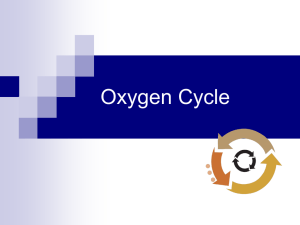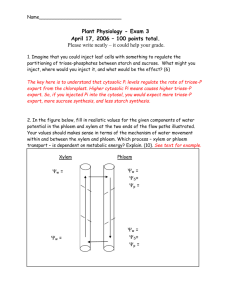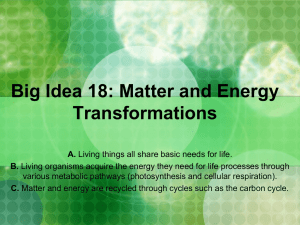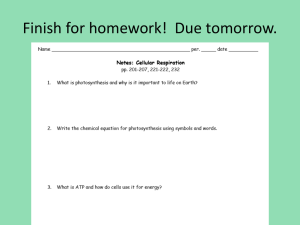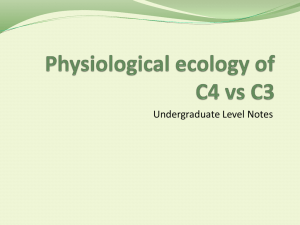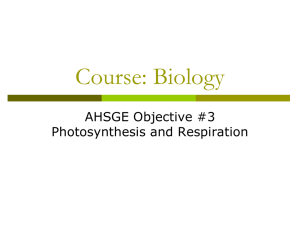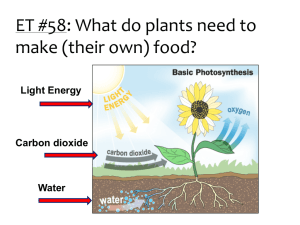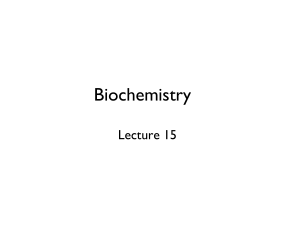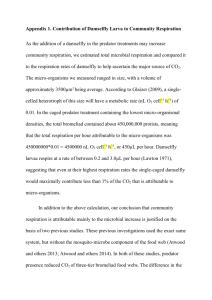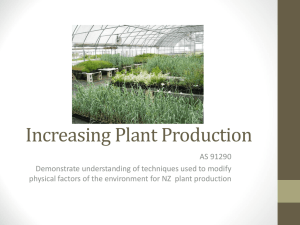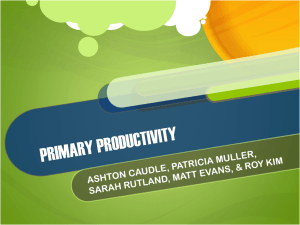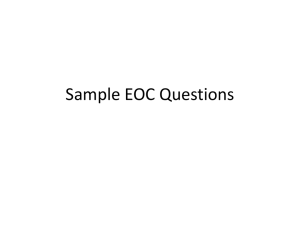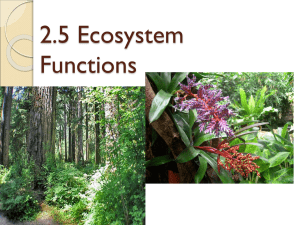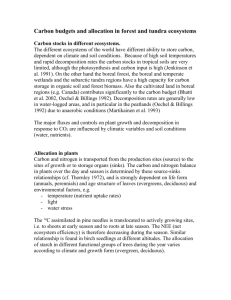energy transformation in plants, northwest 2012
advertisement
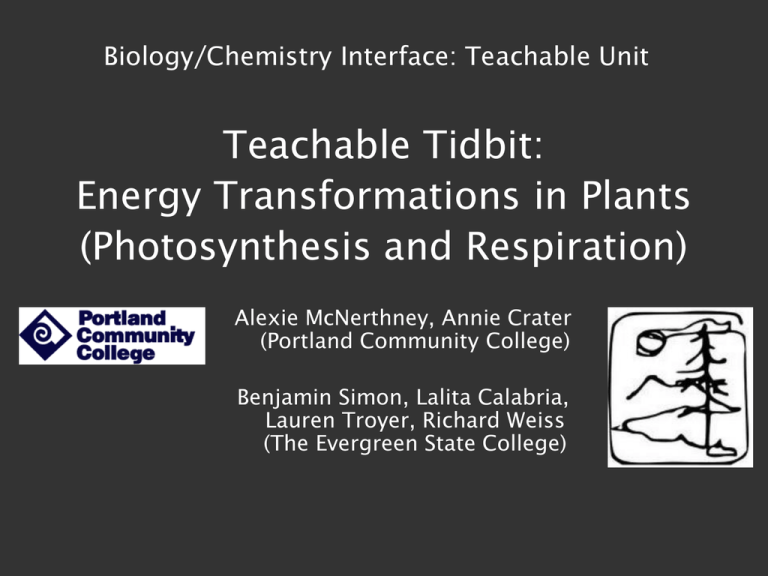
Biology/Chemistry Interface: Teachable Unit Teachable Tidbit: Energy Transformations in Plants (Photosynthesis and Respiration) Alexie McNerthney, Annie Crater (Portland Community College) Benjamin Simon, Lalita Calabria, Lauren Troyer, Richard Weiss (The Evergreen State College) Biology/Chemistry Interface: Teachable Unit Learning Goals Learning Outcomes Understand the processes of energy transformation in plants Compare and contrast photosynthesis and respiration Understand the scientific process Formulate hypotheses and interpret results Understand the role of plants in the global carbon cycle Explain how changes in plant biomass affect carbon flow Summative Assessment Formative Assessment Interpret a graph comparing [CO2] in plants treated with herbicides targeting metabolic processes. Students develop a hypothesis from observations of herbicide effects on plant growth. Diagram the carbon cycle Work in groups to predict effects of global plant biomass (or atmospheric CO2) Context • Topics explored previously in this Introductory Biology or Plant Biology class – Structure and function of chloroplasts and mitochondria – Role of chemiosmosis – Potential and chemical energy conversions – Reactants and products for photosynthesis – Reactants and products for respiration Learning Outcomes • Compare and contrast photosynthesis and respiration – Which processes are common to both plants and animals – Which processes are unique to each • Practice using the scientific method to: – Form a hypothesis – Interpret data (Discuss with small groups) Scenario: You are a farmer trying to eliminate an invasive plant on your farm but you don’t want to kill the beneficial pollinating insects like bees and moths. You tested two chemicals for effectiveness. Product 1 killed the plants, but also killed insects. Product 2 killed only the plants. Generate hypotheses to explain these observations. Be prepared to share your reasoning behind your hypotheses. (5 minutes) (Formative Assessment) You apply the different herbicides to germinating seeds. Product 1 targets which metabolic process that is not targeted by product 2? Product 1 Control A. chemiosmosis B. photosynthesis C. respiration D. regeneration of Rubisco E. ATP production Product 2 (Formative Assessment) You apply the different herbicides to germinating seeds. Product 1 targets which metabolic process that is not targeted by product 2? Product 1 Control A. chemiosmosis B. photosynthesis C. respiration D. regeneration of Rubisco E. ATP production Product 2 Why is the answer “C” and not “A” or “E”? …A and E both occur in mitochondria also. (Summative Assessment) Note: could be a free answer or sequential t/f question Leaf CO2 Concentration (ppm) • Your neighborhood wants to use a product to control dandelions at the park without harming the animals. Experimental data on the two products are shown below. CO2 concentration in leaves was measured after different treatments (red arrow). When interpreting the graph below recall that atmospheric CO2 concentration is about 390 ppm. Which product would you want to use? 400 395 390 Product X Product Y control 385 380 375 Time (minutes) Alternate Scenario You are a restoration ecologist at a local prairie. You are trying to eliminate an invasive grass that is outcompeting native grasses. In the trials you tested two herbicides for effectiveness. Herbicide 1 killed the grass, but also killed an endangered butterfly. Herbicide 2 killed only the grass. Generate hypotheses to explain these observations. Be prepared to share your reasoning behind your hypotheses. (5 minutes)

